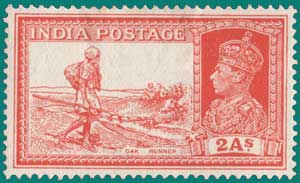
If you have studied history you know that the British Empire grew and expanded through companies that were given a Royal Charter to monopolize trade in various parts of the world to ensure a steady flow of taxes to the Crown. The sad fact is most local people were exploited to the core and converted into slavery or bonded labor, their political independence was lost and their economic freedom curtailed for the benefit the Crown. From the merchants of the wool industry that traded with Flanders in the medieval period, to the East India Company in the late 15th century, our own Hudson's Bay Company here in Canada, the British South Africa Company, the Imperial British East Africa Company and the South Sea Company in the 18th century, these companies were all an important source of government revenue.
The East India Company was the most famous, with hundreds of ships trading in spices, tea, coffee, and cotton, operating in many parts of the world, from St Helena in the west to China in the east.
They too have a history of exploitation and it is well-documented that the Company was evicting Indians off farms that provided subsistence crops and replacing them with cash crops, working the people to exhaustion in the camps, blocking trade, and flooding Bengal with ridiculous imports to kill India’s industries. Yet if you dig deeper you will see India had already lost its glory by the time British arrived, thanks to hundreds of years of Muslim rule. The British happened to trigger the revival which still continues and an independant and exciting India has risen from the ashes of that traumatic time to rediscover itself. If you are interested in reading more about it I think you should try The Honourable Company: History of the English East India Company by John Keay, a fascinating insight into this global corporation.
One of the earliest stamps bearing the Merchant's Mark of the British East India Company, was the Scinde Dawk. Sir Bartle Frere of the East India Company improved upon the postal system of the state by introducing a cheap, uniform rate for postage in 1851 when he became the Chief Commissioner of Sind. This was the "Dawk", the first postage stamp in Asia and the forerunner of the adhesive stamps used throughout India and other areas controlled by the East India Company. Scinde Dawk stamps were also used in Karachi City and remaining Sind regions. The regular postal services and formal stamps were issued in 1854.
| Scinde Dawk |
They were known as Scinde Dawks because they were issued in the
 | ||
| The post or dak runner, issued 1937, from my collection At the outset, the mail or Dak runner was used by Kings and Military commanders for purposes of information and royal correspondence. Each dak runner was provided with a drummer and an escort of two torch bearers and two archers after nightfall as his journey was often dangerous. Some of these runners used carriages, carts and even inflatable animals skins in rivers to convey important information. Although into the middle 1800's the dak runner continued to be predominantly used for carrying official mail, mail carriers came to be used by merchants for business and trading. Ordinary people had little use for such a service (relatives usually carried urgent messages) and the costs of using a regular mail service were too high for the average citizen. Finally though, because of the repeated instances of private mail being carried by bribed official mail carriers, the government decided to extend mail service to private citizens. The runners were eventually replaced with an more efficient system of horses and camels. The mail was carried quickly and efficiently, connecting government offices and post offices from Karachi through Kotri and Hyderabad up to Shikkur in the north:
For more information about the history of postal communications in India together with an overview of the postal history of India's Princely States you should check out the excellent and well researched blog of Sangeeta Deogawanka www.postalhistoryofindia.blogspot.com. If, like me, you are a stamp collector of the the India and the Princely States of the British Empire period to 1947 when India became a self-governing Dominion, Sangeeta's insightful research makes this fascinating period a little more understandable! gws
|
